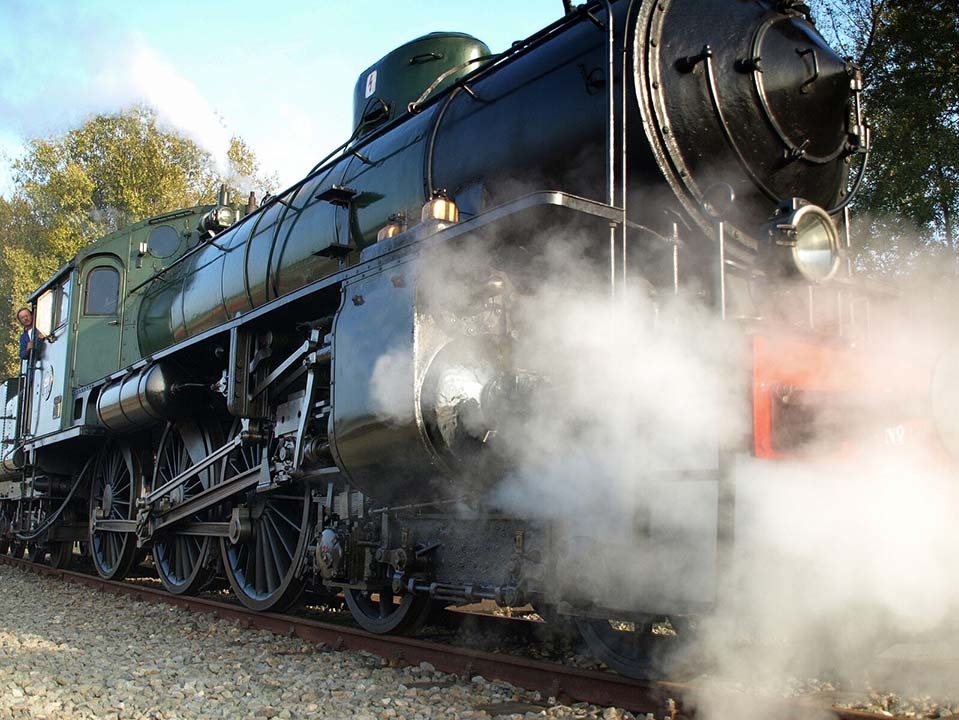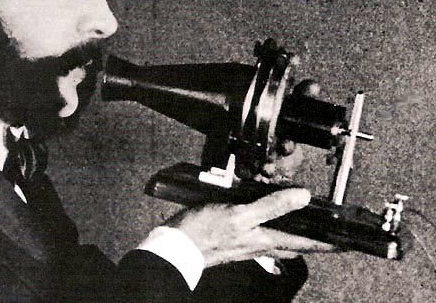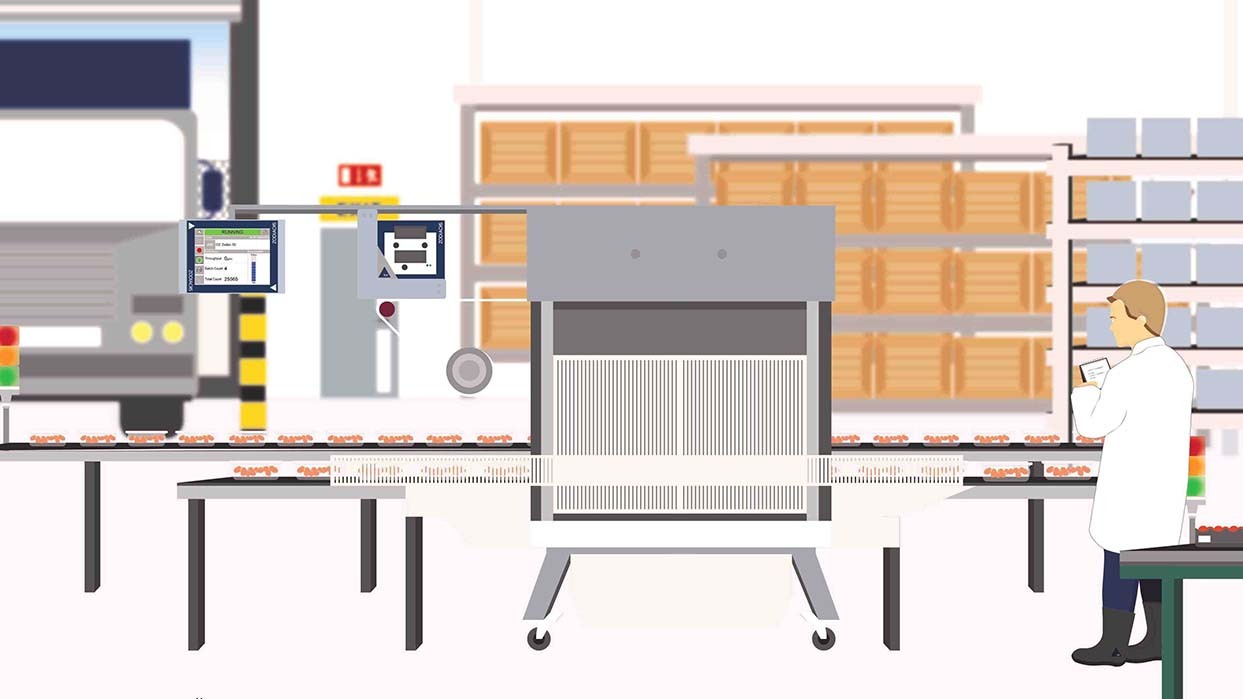When Will the Next Industrial Revolution be?
7th August, 2019
How many Industrial Revolutions have we had and what does it mean for factories of the futures?
There have been four Industrial Revolutions to date according to most researchers. The first Industrial Revolution began in 1760 in Britain and marked the machination of factories and the beginning of industrial automation.
This involved going from hand production to utilising machinery and tools, for example the Spinning Jenny, which allowed an unskilled worker to weave eight spools of thread at the same time, vastly reducing the amount of time and skill needed to create cloth.
The Industrial Revolution started in Britain as factories began harnessing steam power and was fuelled by Britain’s many technological innovations during the time. For example, the telegraph and railway increased the ability to transports goods and ideas, a large transformation as communication before the Industrial Revolution was a long, cumbersome process.

It had a profound effect on businesses in the Industrial Revolution and how factories operated as Britain transformed from an agricultural society to an industrial, urban society.
When was the second Industrial Revolution?
The second Industrial Revolution started in 1870 and led to the adoption of electrical power, telephones and extensive railway transport.

This allowed ideas, people and goods to spread at a rate never seen before, leading to great economic changes as the Industrial Revolution facilitated globalisation. Factories began using production lines and electrification during the second Industrial Revolution, increasing the speed and quantity of goods production.
Benefits of the Digital Revolution
The third Industrial Revolution, sometimes called the Digital Revolution began in 1969 stimulated by integrated circuits and microprocessors (microchips), leading to computers, phones and the internet. This transformed businesses in the Industrial Revolution as analogue technologies became digital, with all the associated benefits.

The Digital Revolution completely transformed communication within factories and businesses as it was possible to create and share identical copies of an original, allowing goods, production and processes to be mirrored perfectly worldwide. The widespread public adoption of technologies brought about by the Digital Revolution further increased globalisation and made communication instantaneous and unrestricted by geography for much of the global population.
The 4th Industrial Revolution definition
The next Industrial Revolution was the fourth Industrial Revolution (Industry 4.0), which can be defined as “the current trend of automation and data exchange in manufacturing technologies, also referred to as ‘smart factories’ or ‘the Industrial Internet of Things’ (IIoT); Industry 4.0 is the notion that every machine, process and system throughout a factory or business will be integrated and connected to the internet for maximum efficiency within the factory.”

The major difference between the 3rd and 4th Industrial Revolution is a greater synchronicity between machinery allowing the machines to communicate with each other, enabling the machinery to run itself autonomously. This means the factory can get the most out of each component machine without human input.
Our coding experts have written extensively on the subject, offering guidance for businesses and factories on preparing for the fourth Industrial Revolution. Read how you can prepare your factory for Industry 4.
The increasing rate of Industrial Revolutions
Looking at the timeline of Industrial Revolutions it is clear that the gap between them is shortening with each passing one. The difference between the first and second industrial revolution was 105 years; this reduced slightly to a 99 year gap between the second and third industrial revolution. However this gap nearly halves between the third and fourth industrial revolution, to just 49 years. This has been driven by rapid technological advancements, facilitated by ‘Moore’s Law’ as computer chips double in power every two years. According to Ray Kurzweil in his book The Singularity Is Near the new generation of technology stands on the shoulders of its predecessors, leading to increasing, exponential improvements.
In 2001 Ray wrote: “We won’t experience 100 years of progress in the 21st century—it will be more like 20,000 years of progress (at today’s rate).”
Whereas once upon a time an Industrial Revolution spanned a person’s lifetime, workers, factories, and businesses will now be impacted by multiple.
This has massive implications for all within the industry, it is going to require constant evolution by business and factories to harness the efficiency, speed and quality gain of each passing revolution.
No longer will it be possible for a worker to learn during their formative years and apply this knowledge for coming decades. To remain up-to-date within this fast-paced industry will require continued learning throughout their working life as Industrial Revolutions, completely transform the industry.
This is even more keenly felt by young workers as David Atkinson, Lloyds UK Head of Manufacturing & SME Commercial Banking, at a recent PPMA event noted: “There could be five or six more revolutions in a young person’s lifetime at the rate they’re increasing”.
What the Industrial Revolutions has meant for factories?
As has been shown at the start of this blog, the previous four Industrial Revolutions have irreversibly altered manufacturing and the world.
Each passing revolution has led to increased globalisation, vast efficiency gains, leaving behind completely different societies.

The Industrial Revolutions have transformed factories and production from slow, hand-made processes, to the smart factories that we see today, running without human input, independently optimising each part of the process for ever faster production. Demonstrating that the increasing rate of these Industrial Revolutions marks a massive opportunity for factories.
On the other hand it also carries risks for manufacturers, in a way that it didn’t years ago. Factories that are slow to react to these Industrial Revolutions could be well and truly left behind, conceivably stuck one or even two revolutions behind progressive factories. With the vast efficiency gains that each of these revolutions have brought is it possible to stay profitable in this scenario? Consider a person hand sewing with needles compared to a fully automated sewing machine. It doesn’t seem likely that an outdated factory could remain competitive.
When will the next Industrial Revolution be?
The timeframe between the previous two industrial revolutions halved to 49 years, if that was to continue, some quick napkin mathematics says the next Industrial Revolution would be in 2042, 24 years after Industry 4.0. The 6th Industrial Revolution could be just 12 years after that in 2054, and the 7th in 2060.
Following these statistics and the massive improvements each revolution has brought it is easy to see why Ray wrote there will be “20,000 years of progress” over the next 100 years in 2001.
This was also noted at a recent PPMA conference as Tom Crawford, Head of Engineering at Lucozade Ribena, said: “the rate of change on planet and manufacturing is the fastest ever experienced”.
What do you think? Is the fifth Industrial Revolution around the corner? Are we close to reaping all the benefits of Industrial 4.0, or is all this talk about Industrial Revolution’s overblown?
Related
How has the coronavirus pandemic impacted food manufacturing and consumption in the UK?
More Resources

